Kedves Olvasóink!
Havonta frissülő könyvajánló rovatunkkal a könyvtárunkba frissen érkezett kiadványokra szeretnénk felhívni a figyelmüket. A könyvek kölcsönözhetők, hozzáférhetőségükről az online katalógusban informálódhatnak, további felvilágosítást a könyvtárosoktól kérhetnek.
A könyvtár nyitva tartásáról és a kölcsönzés feltételeiről a könyvtár oldalán tájékozódhatnak.
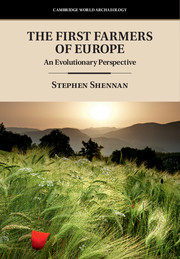
Stephen Shennan: The First Farmers of Europe: An Evolutionary Perspective
Cambridge, Cambridge University Press, 2018
Sorozat: Cambridge world archaeology
Raktári jelzet: R-40.397/2021
Nyelv: Angol
Knowledge of the origin and spread of farming has been revolutionised in recent years by the application of new scientific techniques, especially the analysis of ancient DNA from human genomes. In this book, Stephen Shennan presents the latest research on the spread of farming by archaeologists, geneticists and other archaeological scientists. He shows that it resulted from a population expansion from present-day Turkey. Using ideas from the disciplines of human behavioural ecology and cultural evolution, he explains how this process took place. The expansion was not the result of 'population pressure' but of the opportunities for increased fertility by colonising new regions that farming offered. The knowledge and resources for the farming 'niche' were passed on from parents to their children. However, Shennan demonstrates that the demographic patterns associated with the spread of farming resulted in population booms and busts, not continuous expansion.
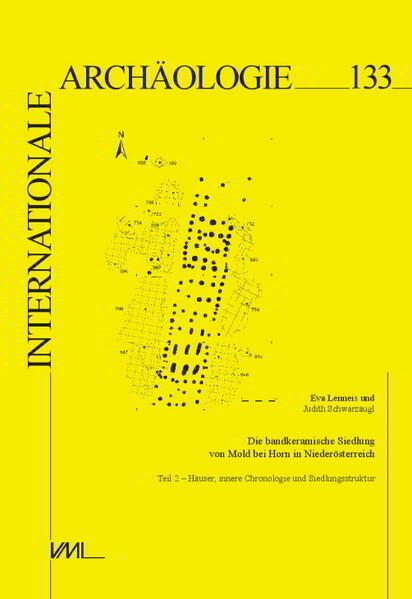
Eva Lenneis, Judith Schwarzäugl: Die bandkeramische Siedlung von Mold bei Horn in Niederösterreich. Teil 2 - Häuser, innere Chronologie und Siedlungsstruktur
Rahden/Westf., Leidorf, 2019
Sorozat: Internationale Archäologie
Raktári jelzet: R-40.392/2021
Nyelv: Német
Der erste Band zur 1995-2007 ergrabenen Siedlung von Mold-Im Doppel enthält Beiträge zu Forschungsgeschichte, Fundverteilung, C14-Daten, Keramik der Häuser 1-4, Silexgeräten und Felsgesteingeräten, Tierresten und Pflanzenresten sowie Siedlungsstruktur, Wirtschaftsstruktur und Sozialstruktur. Baubefunde und restliche Keramik folgen in Band 2. Die Siedlung vom Ende der ältesten Bandkeramik ergab 16 Gebäude aus ca. 200 Jahren, deren nur teilweise Gleichzeitigkeit und allmähliche West-Ost-Verlagerung sich an C14-Daten und der Keramikseriation zeigte. Für die Analyse der zu 24% verzierten Keramik standen 412 Gefäßeinheiten [geglättet, graphitiert, geschlickert] zur Verfügung. Sie stammen meist aus intakten Befunden wie die interne, aber kaum befundübergreifende Streuung zeigt. Steingeräte [347 Silices; Mahlsteine.] ergaben einen Wandel von lokalen Ressourcen hin zu Importen [H, PL, CZ], wohl wegen eines durch Heirat oder Viehtrift erweiterten sozialen Netzwerks. Die Fundverteilung zeigte keine direkte Relation zwischen Hausgröße und Wirtschaftskraft, aber Aufgabenteilung zwischen Haushalten an. Tierknochen deuten anfangs noch auf Jagd, später dominiert das Rind völlig.
This first volume on the settlement at Mold-Im Doppel, excavated in 1995-2007, contains papers on the history of research, find distribution, radiocarbon dates, pottery of houses 1-4, flint and rock implements, animal and plant remains, and the structure of settlement, economy, and community. Building features and the remaining pottery will be published in volume 2. The settlement of the end of the oldest Linear Pottery had 16 houses in some 200 years, the only partial simultaneity and west-east shift of which was revealed by radiocarbon dates and pottery seriation. For pottery analysis 412 vessel units, decorated to some 24%, burnished, with graphite or engobe, were available. They mostly came from intact features as was shown by their distribution within, but hardly between features. Stone tools [347 silices; querns etc.] indicated a change from local resources to imports [H, PL, CZ], probably because of enlarged social networks due to marriage or cattle driving. Find distribution indicated no direct relation between house size and economic rank, but division of labour between households. Initially animal bones still hinted at hunting, later cattle became absolutely dominant.
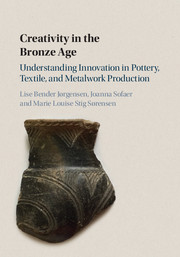
Lise Bender Jørgensen, : Creativity in the Bronze Age: understanding innovation in pottery, textile, and metalwork production
Cambridge, Cambridge University Press, 2018
Raktári jelzet: R-40.425/2021
Nyelv: Angol
Creativity is an integral part of human history, yet most studies focus on the modern era, leaving unresolved questions about the formative role that creativity has played in the past. This book explores the fundamental nature of creativity in the European Bronze Age. Considering developments in crafts that we take for granted today, such as pottery, textiles, and metalwork, the volume compares and contrasts various aspects of their development, from the construction of the materials themselves, through the production processes, to the design and effects deployed in finished objects. It explores how creativity is closely related to changes in material culture, how it directs responses to the new and unfamiliar, and how it has resulted in changes to familiar things and practices. Written by an international team of scholars, the case studies in this volume consider wider issues and provide detailed insights into creative solutions found in specific objects.
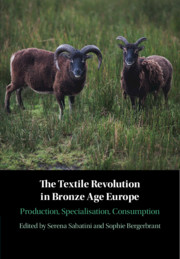
: The Textile Revolution in Bronze Age Europe: Production, Specialisation, Consumption
Cambridge, Cambridge University Press, 2020
Raktári jelzet: R.40.422/2022
Nyelv: Angol
Textile production and the introduction of wool and woolen textiles represented a great revolution in Bronze Age Europe at the dawn of the second millennium BC. The available contemporary written sources from the Mediterranean and Near East suggest that textile production had a strong impact on the cultural, social, and economic life. In most parts of continental Europe, however, archaeological material alone can help us understand the details relating to textile production and its wider importance to early societies. This book provides new insights on patterns of production, specialization, and consumption of textiles in Europe throughout the Bronze Age. Assembling a diverse array of studies on various aspect of the textile production and economy, the essays, specially written for this volume, provide a wide range of scientific data as well as archaeological evidence. They also show the great potential of examining early textile production through the use of innovative methodologies and diverse perspectives.
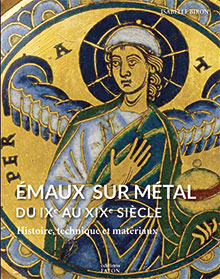
Isabelle Biron: Emaux sur métal du IXe au XIXe siècle: Histoire, technique et matériaux
Nyelv: Francia
Associant l’histoire de l’art, l’archéométrie et la science des matériaux, ce livre d’un genre nouveau est le premier à être consacré à l’étude scientifique en laboratoire d’émaux sur métal. Art du feu et de la couleur, la technique de l’émail sur métal a permis la réalisation de magnifiques objets, religieux ou profanes. Elle a fait en Occident l’objet d’innovations constantes, les fastes de Byzance ou de Limoges. Une histoire prestigieuse Ce livre retrace dans une première partie la prestigieuse histoire des émaux sur métal, depuis leur origine, probablement dans le Bassin méditerranéen vers la fin du XVe siècle avant notre ère, jusqu’au XIXe siècle. On y découvre toutes les productions d’émaux connues en Occident, ainsi que celles de Byzance. Le Moyen Âge et la Renaissance produisent de magnifiques émaux et inventent de nouvelles techniques, qui seront utilisées jusqu’au XIXe siècle. Période de renaissance de l’art de l’émail avec d’exceptionnelles créations rivalisant de virtuosité avec celles des époques antérieures. Ce riche panorama invite le lecteur à découvrir dans leur contexte historique les diverses productions d’émaux étudiées en laboratoire et présentées dans la seconde partie de cet ouvrage, originaires de France, de Lotharingie, d’Espagne, d’Europe du Nord et de Byzance. Les secrets des émailleurs, leurs matériaux et leurs techniques Ce livre redécouvre dans une seconde partie les secrets techniques des émailleurs, grâce aux résultats scientifiques acquis au Centre de recherche et de restauration des musées de France (C2RMF) concernant l’analyse chimique des matériaux constitutifs des œuvres et les techniques de fabrication. Ceci pour neuf productions d’émaux sur métal datées du IXe au XIXe siècle, recouvrant la quasi-totalité des différentes techniques connues en Occident. Cette partie expérimentale, enrichie par l’étude des sources écrites datant du Moyen Âge au XIXe siècle, incite le lecteur à voyager dans le temps afin de mieux se représenter la fabrication du verre, les gestes des émailleurs et l’organisation des ateliers. Avec de nombreux détails photographiques, des radiographies des objets et des tableaux d’analyses chimiques (métal et verre) pour chaque production d’émaux, cet ouvrage présente la synthèse la plus complète des travaux du C2RMF dans ce domaine.
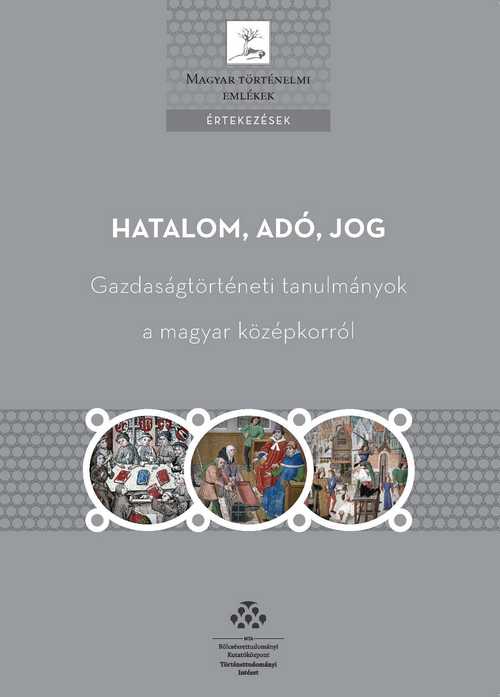
Kádas István, Weisz Boglárka (szerk.): Hatalom, adó, jog: gazdaságtörténeti tanulmányok a magyar középkorból
Budapest: MTA BTK Történettudományi Intézet, 2017
Sorozat: Magyar történelmi emlékek. Értekezések
Raktári jelzet: R-40.412/2021
Nyelv: Magyar
A kötet az Árpád-kortól a kora újkorig terjedő időszakot felölelő gazdaságtörténeti, illetőleg ahhoz szorosan kapcsolódó tanulmányokat közöl, melyek számos esetben, akár a téma, akár a benne szereplő személyek, városok kapcsán szorosan összefonódnak, ugyanakkor társadalom-, jog-, egyház-, politika- és művészettörténeti következtetéseket is magukban hordoznak. Interdiszciplináris megközelítés jellemző a kutatócsoport munkájára, és ez mutatkozik meg a tanulmánykötet egészében is, sok esetben pedig az egyes tanulmányok szintjén is. A tartalomjegyzék és az előszó itt olvasható.
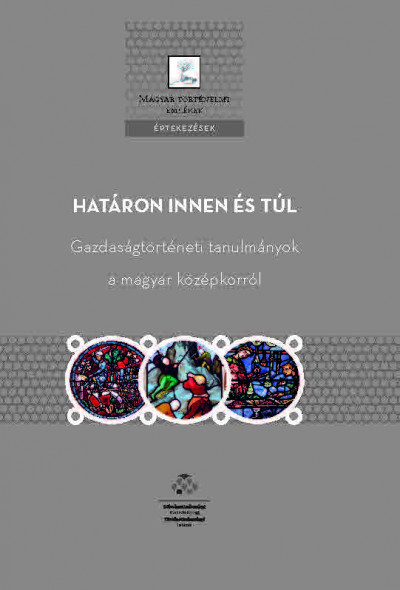
Kádas István, Weisz Boglárka (szerk.): Határon innen és túl: gazdaságtörténeti tanulmányok a magyar középkorról
Budapest: Bölcsészettudományi Kutatóközpont, Történettudományi Intézet, 2021
Sorozat: Magyar történelmi emlékek. Értekezések
Raktári jelzet: R-40.435/2022
Nyelv: Magyar
A középkor színes világának megismerését és megértését avatott szakemberek – történészek, régészek, numizmaták – segítik, elkalauzolva a kötet olvasóját a középkori Magyar Királyságba és annak határain túlra. A szerteágazó témákat feldolgozó tanulmányok ezúttal is a királyi hatalom és a városok gazdasági életében betöltött szerepe köré rendeződnek. A kötet lapjain a kiváltságokat és birtokokat adományozó uralkodó – vagy éppen a királyi jogokat gyakorló tartományúr – mellett megelevenedik a középkori Székesfehérvár, Zára, Bologna és Novgorod forgataga; a magyar és külföldi kereskedők és portékáik, vagy éppen az adó- és tizedszedők által gondosan behajtott pénz hosszú útja szárazon és vízen; de bepillantás nyerhető az arany-, ezüst- és sóbányászok mindennapi életébe is. A kötet tartalomjegyzéke itt olvasható.
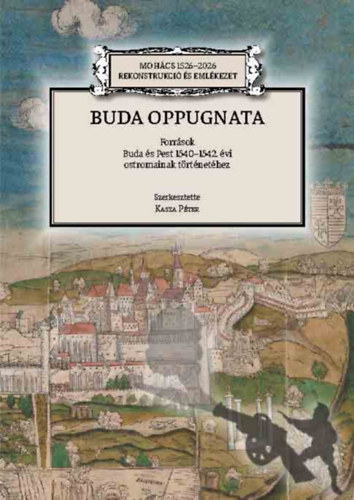
Kasza Péter (szerk.): Buda oppugnata: források Buda és Pest 1540-1542. évi ostromainak történetéhez
Budapest: Bölcsészettudományi Kutatóközpont, Történettudományi Intézet, 2021
Sorozat: Mohács 1526–2026. Rekonstrukció és emlékezet
Raktári jelzet: R-40.436/2022
Nyelv: Magyar
Aligha van olyan magyar olvasó, aki ne hallott volna arról, hogy a szultán csapatai 1541. augusztus 29-én csellel, kardcsapás nélkül szállták meg a Magyar Királyság fővárosát. Kevesebben tudják azonban, hogy Buda sorsa nem egyetlen délután alatt pecsételődött meg: a főváros és mellette Pest birtoklásáért 1540 őszétől 1542 októberéig, két éven át öldöklő harc folyt a Habsburgok, az oszmánok, illetve magyar híveik és szövetségeseik között. E mind nagyobb erők bevonásával zajló küzdelem Európa egyik legfontosabb hadszínterévé tette Budát, számos nyelven és számos műfajban jelentős kortárs visszhangot váltva ki egyben. Kötetünk ezekből a történeti és irodalmi művekből, kortárs tudósításokból ad bőséges és reprezentatív válogatást, s reményeink szerint nemcsak elsőrangú forrása lesz a korszakkal foglalkozó szakembereknek, de igényt tarthat a nagyközönség érdeklődésére is. A kötetet kivételesen gazdag képmellékletek, térképek és mutatók teszik élvezetesebbé és könnyen használhatóvá. Buda török kézre kerülésének folyamata korszakváltó esemény a magyar történelemben: ennek az eseménysornak kíván hű krónikája lenni ez a forrásgyűjtemény.
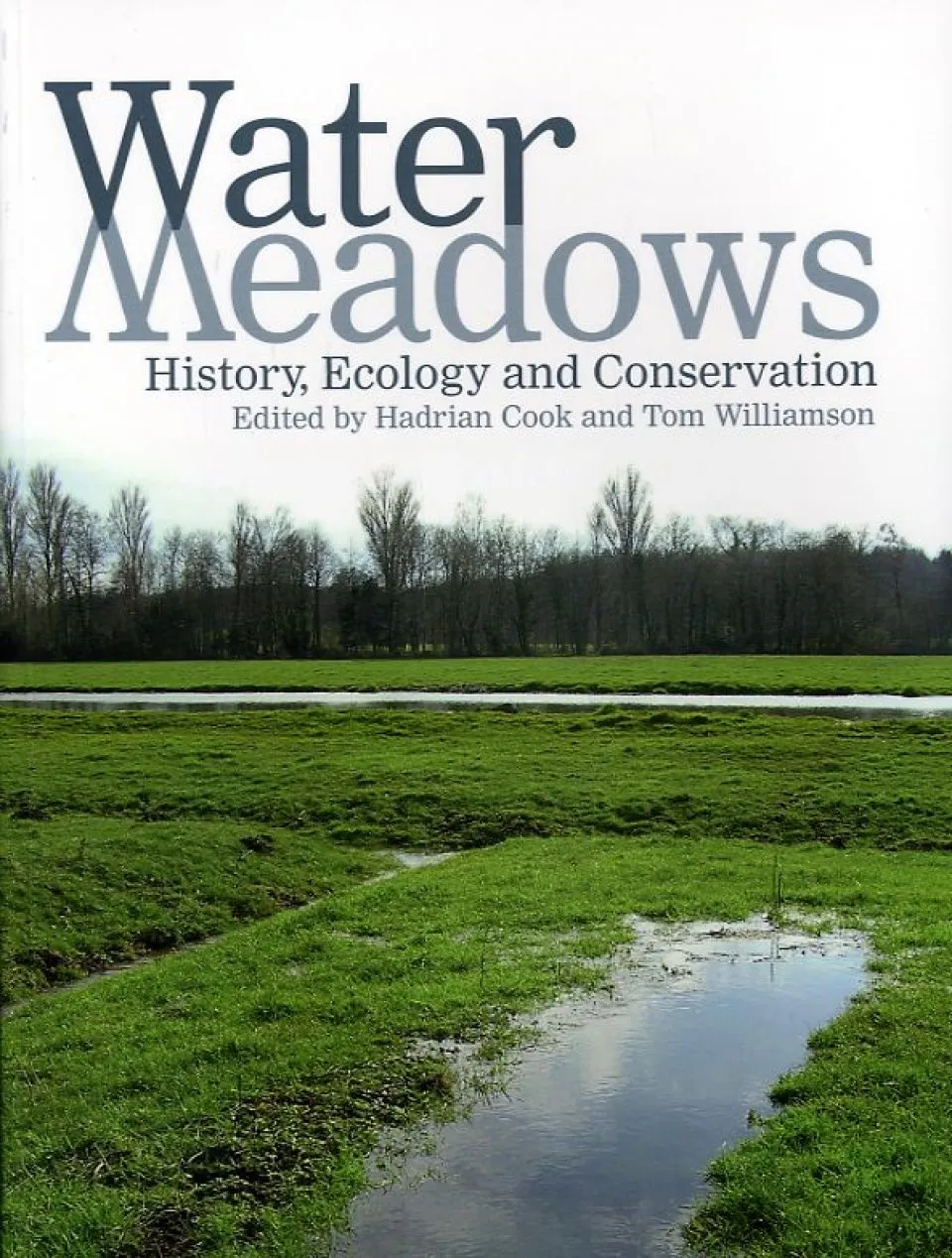
Hadrian Cook, Tom Williamson (eds): Water Meadows: History, Ecology and Conservation
Lancaster, Carnegie Publiching Ltd, 2007
Raktári jelzet: R-40.396/2021
Nyelv: Angol
This book brings to public attention some of the most evocative and threatened features of the landscape of southern England. Water meadows work with nature to improve agricultural productivity, whilst providing rich habitats for wildlife such as water voles, waders and grass snakes. They are areas of low-lying grassland which are regularly 'drowned' - artificially irrigated - at certain times of the year, to stimulate the early growth of grass in the spring. Only a few remain in operation today, though they played a crucial role in Britains past farming economy. Their archaeological remains can be found all over southern England, with Hampshire and Wiltshire having perhaps the best surviving examples. In this book leading archaeologists and scientists - together with one of the last practising 'drowners' - explore the ecology and history of water meadows. They ask when and where the art of floating originated, and explain its hydrology. They also investigate water meadows conservation status and potential for the future.


